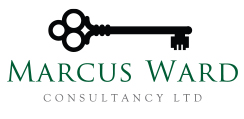What can be used to make a claim?
It is well known that in order to claim input tax on expenditure a business is required to have a valid tax invoice to support it. But what if there is no VAT invoice? Can HMRC accept any other evidence to support a claim? Well, the answer is yes… sometimes.
HMRC has discretion provided by EC law. The right to deduct is given by Article 167 of the Principal VAT Directive (via VAT Regulations 1995/2518 Reg 29(2) in the UK). Specifically, the wording most relevant here is “…such other documentary evidence of the charge to VAT as the Commissioners may direct.” Broadly, a business must hold the correct evidence before being able to exercise the right to deduct.
Where claims to deduct VAT are not supported by a valid VAT invoice HMRC staff are required to consider whether there is satisfactory alternative evidence of the taxable supply available to support deduction. HMRC staff should not simply refuse a claim without giving reasonable consideration to such evidence. HMRC has a duty to ensure that taxpayers pay no more tax than is properly due. However, this obligation is balanced against a duty to protect the public revenue.
Full details of tax invoices here.
What HMRC consider
HMRC staff are required to work through the following checklist:
- Does the business have alternative documentary evidence other than an invoice (for example a supplier statement)?
- Does the business have evidence of receipt of a taxable supply on which VAT has been charged?
- Does the business have evidence of payment?
- Does the business have evidence of how the goods/services have been consumed or evidence regarding their onward supply?
- How did the business know the supplier existed?
- How was the business relationship with the supplier established? For example: How was contact made?
- Does the business know where the supplier operates from (have staff visited?)
- How did the business contact them?
- How does the business know the supplier can supply the goods or services?
- If goods, how does the business know they are not stolen?
- How does the business return faulty supplies?
Outcome
If the responses to the above tests are credible, HMRC staff should exercise their discretion to allow the taxpayer to deduct the input tax. Overall, HMRC are required to be satisfied that sufficient evidence is held by the business which demonstrates that VAT has been paid on a taxable supply of goods or services received by that business and which were used by that business for its taxable activities
Challenge HMRC’s decision
A business may only challenge HMRC’s decision not to allow a claim (did not exercise its discretion) if it acted in an unfair or unreasonable way. In these cases, the onus is on the taxpayer to demonstrate that HMRC have been unreasonable in not using the available discretion. This is quite often a difficult thing to do.
Case law
Not surprisingly, there is significant case law on this subject. The most relevant and recent being the Upper Tribunal (UT) cases of James Boyce and Scandico Ltd.
Tips
If possible, always obtain a proper tax invoice from a supplier, and don’t lose it! The level of evidence required when no invoice is held usually depends on the value of the claim. There would be a difference between persuading an inspector that £20 input tax on stationery is recoverable and the claiming of £200,000 VAT on a property purchase is permissible. As always in VAT, if you get it wrong and claim VAT without the appropriate evidence there is likely to be a penalty to pay.
If you, or your clients are in dispute with HMRC on input tax claims, please contact us.
